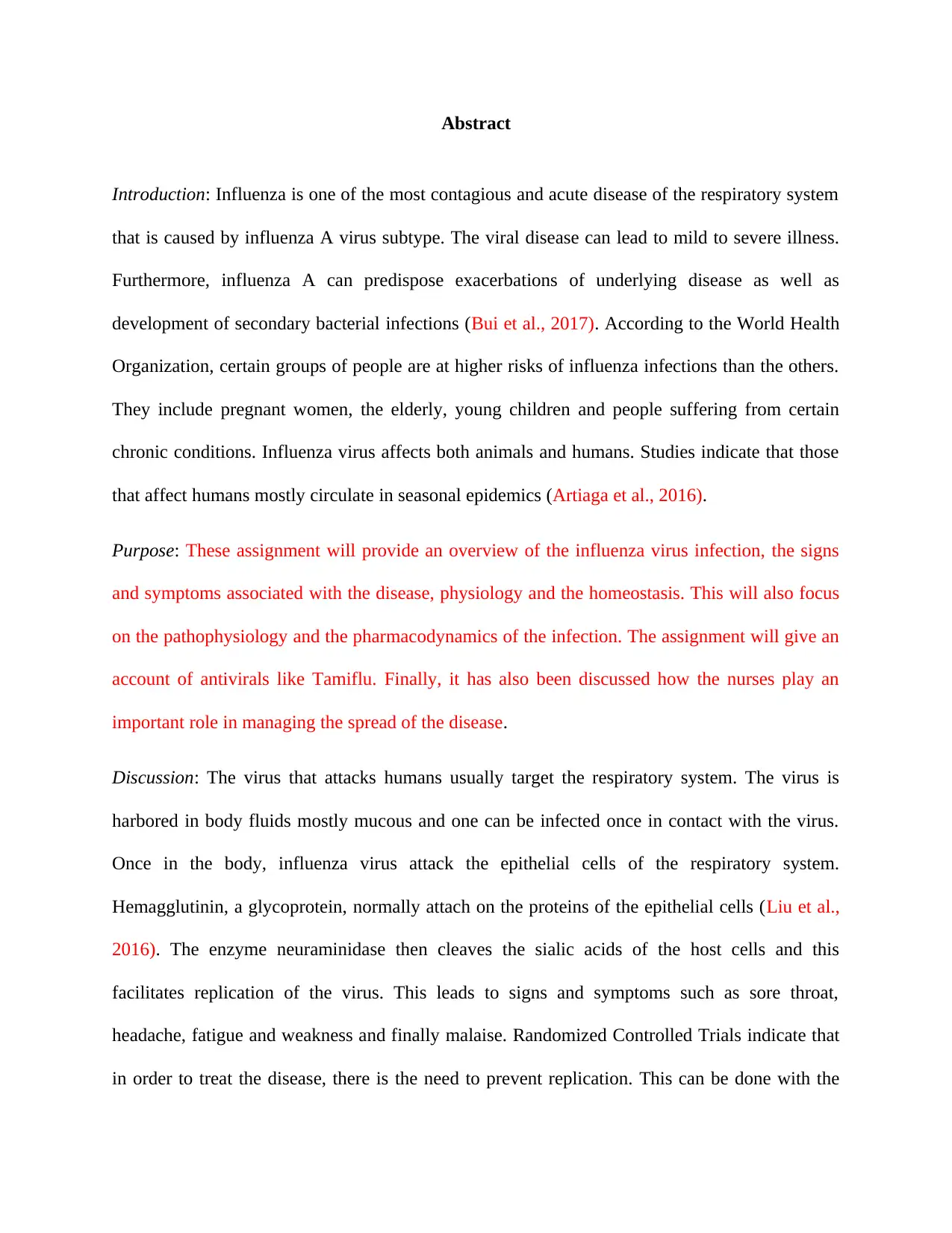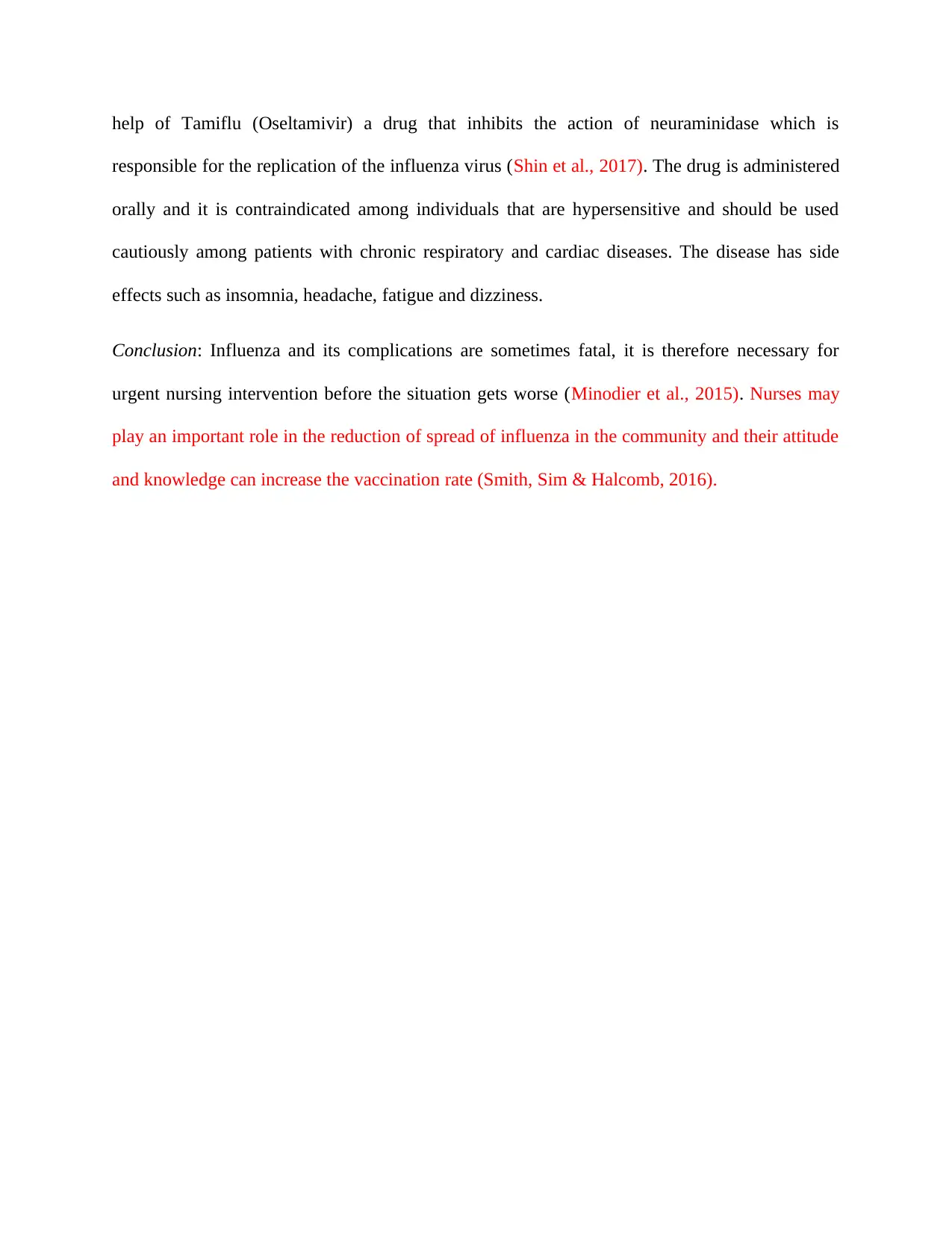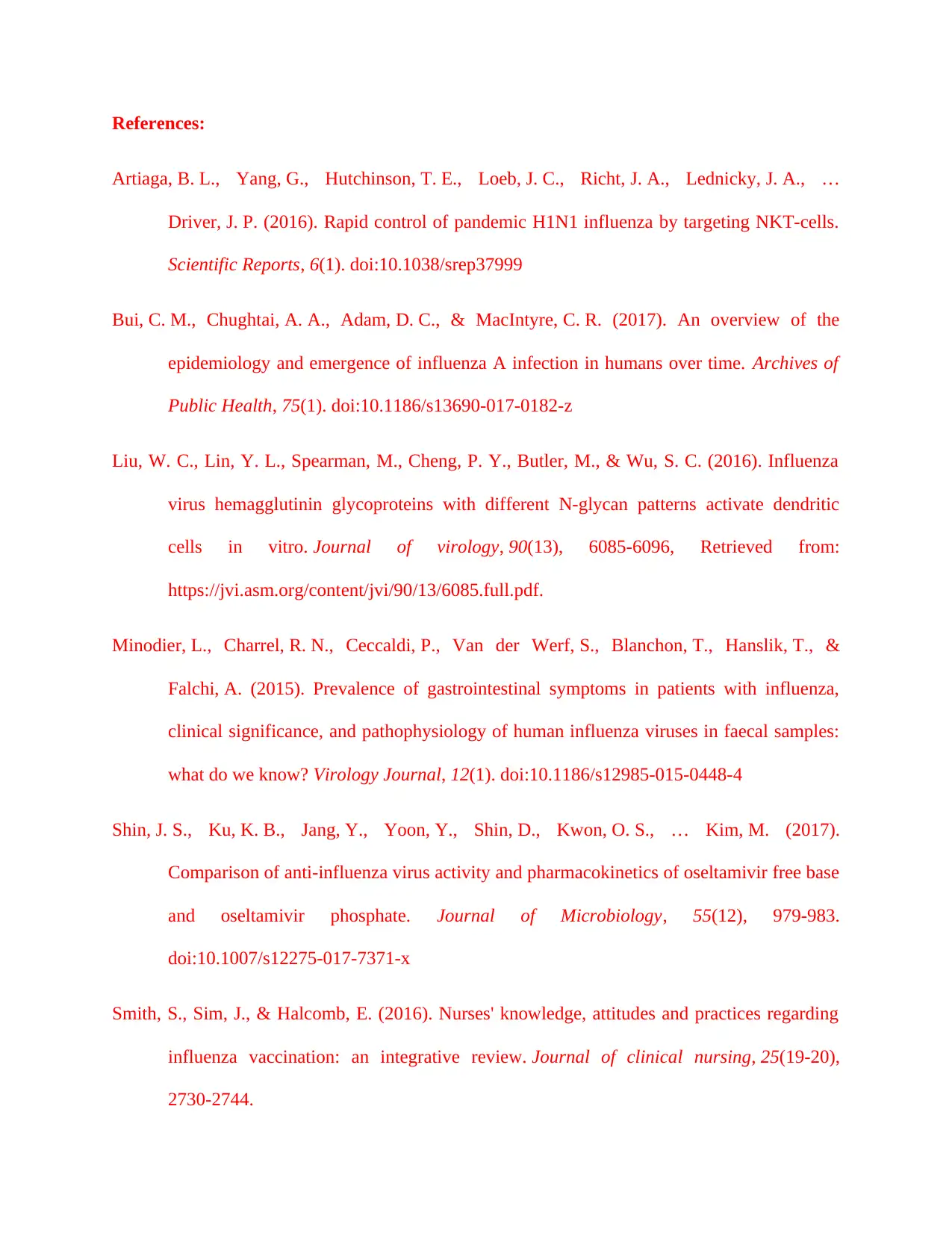NSC2500 Assessment 1: Influenza Pathophysiology and Antivirals
VerifiedAdded on 2023/02/01
|3
|839
|86
Report
AI Summary
This report provides a comprehensive overview of influenza virus infection, beginning with an abstract that introduces the contagious nature of the disease and its potential complications. The report delves into the purpose of the assignment, which is to explore the virus's signs, symptoms, physiology, and impact on homeostasis, along with its pathophysiology and pharmacodynamics. It examines antiviral treatments, specifically Tamiflu (Oseltamivir), including its mode of action and contraindications. Furthermore, the report emphasizes the crucial role of nurses in managing the spread of influenza and improving vaccination rates within the community. The discussion section details the virus's attack on the respiratory system, the mechanism of infection, and the resulting symptoms. The report concludes by highlighting the importance of nursing interventions to prevent severe outcomes and reduce the spread of the disease, supported by relevant references.
1 out of 3










![[object Object]](/_next/static/media/star-bottom.7253800d.svg)